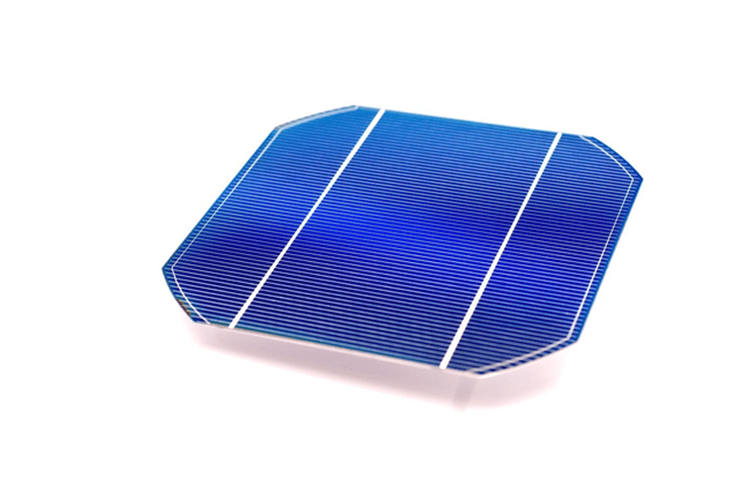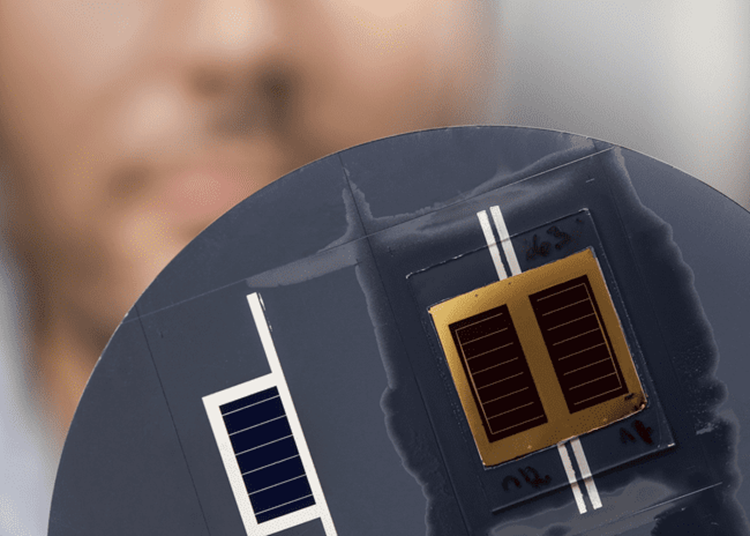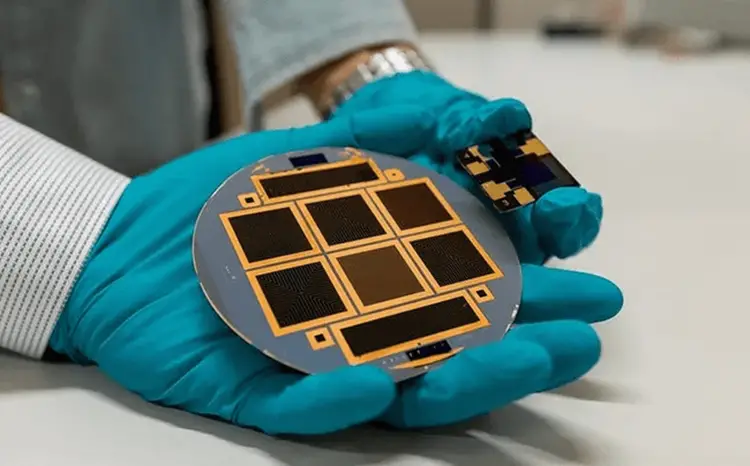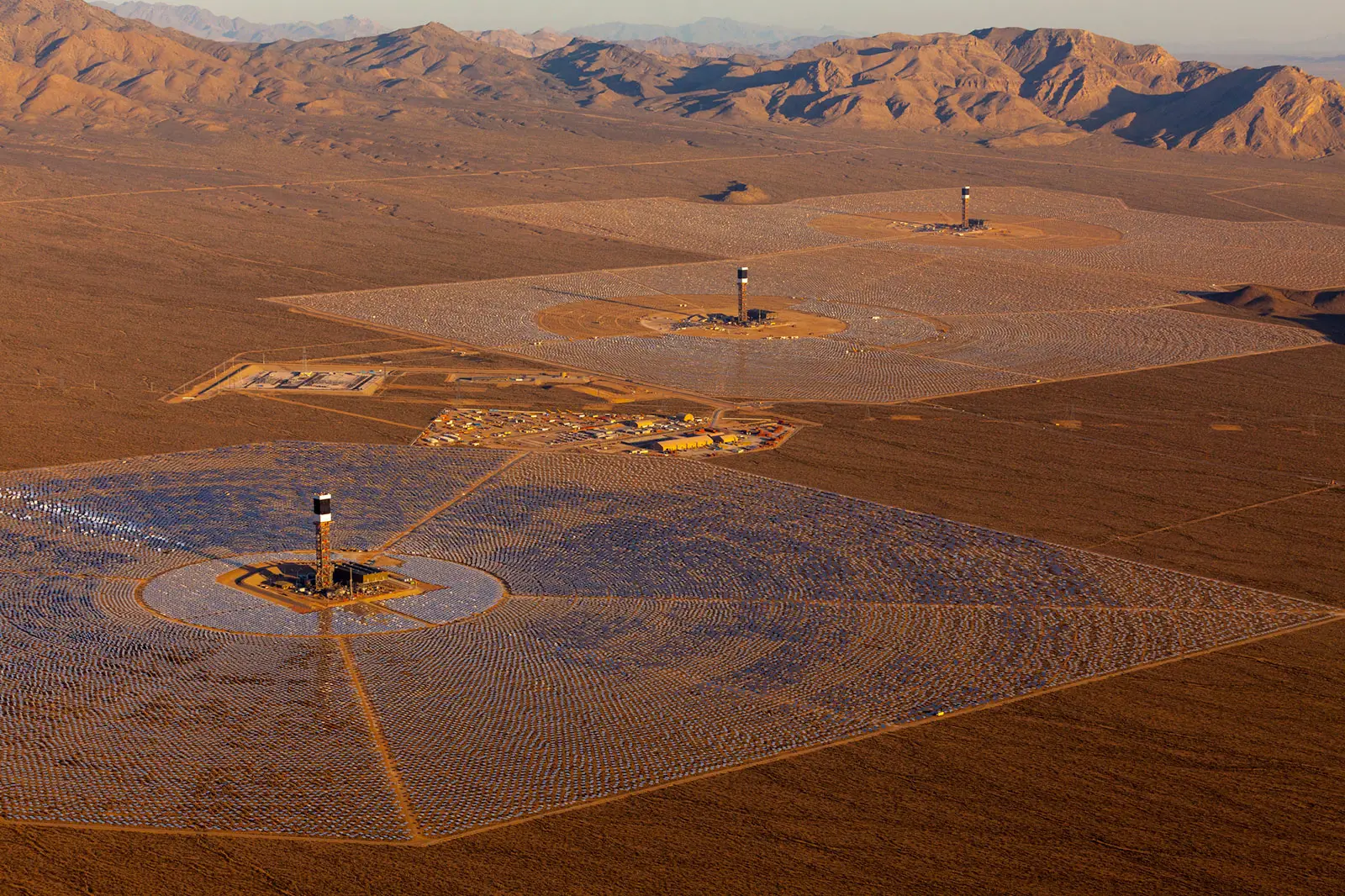Scientists from the Netherlands Organisation for Applied Scientific Research (TNO), the Eindhoven University of Technology, the Delft University of Technology, and the Belgian research institute Imec worked together to overcome the limitations of existing commercial photovoltaic (PV) modules and improve upon the already impressive conversion efficiency of tandem solar cells.
Incredibly, they were able to break the 30% barrier using four-terminal perovskite/silicon tandem devices with certified top cells. More energy can be produced per unit area, and the cost per kilowatt-hour is reduced with such high efficiency.
Using a hybrid approach that combines the advantages of the newly developed perovskite solar cell and more established silicon cell technologies, this has been accomplished.
By improving the performance of the perovskite cell, the researchers were able to boost the cell’s overall efficiency. The perovskite cell was developed by TNO, TU Eindhoven, and Imec.
Silicon Solar cells fading away?
For a long time, silicon was the material of choice for solar cells because it offered the best balance of efficiency, durability, cost, and ease of manufacture.
There has been a steady increase in the efficiency of these solar cells thanks to technological developments over the years, but now that we’re getting close to the material’s theoretical limit of 29.4 percent, there’s not much more room for improvement.

The rapid adoption of perovskite as a viable alternative does not signal the imminent demise of silicon, however.
The two materials complement each other rather well, with silicon being particularly adept at absorbing red and infrared light and perovskite concentrating on the green and blue regions of the spectrum.
This means that the efficiency of tandem silicon-perovskite solar cells can potentially exceed that of either material used separately. The previous record for efficiency was 25.2%, set in 2018, and was surpassed twice in 2020, first at 27.7% and then at 29.15%.
With another increase in 2021, it will be very close to 30 percent.
Breaking the barrier and achieving this feat
“Tandem solar panel,” yes, that’s the key design for achieving this. In order to collect a wider spectrum of sunlight, researchers in the Netherlands collaborated to develop a four-terminal perovskite/silicon tandem device. Rather than building solar cells the conventional way, the researchers combined the new perovskite solar cell technology with conventional silicon solar cell technology.
Perovskites can use wavelength in the ultraviolet and visible light while being transparent to infrared light, in contrast to the former silicon material, which works well with light in the visible and infrared spectrum.
The top and bottom cells in a four-terminal tandem device can function separately, enabling the use of bifacial tandems and increasing the architecture’s power output.

With an area of 33 square millimeters, researchers have successfully increased the efficiency of semi-transparent perovskite cells up to 19.7%.
“This type of solar cell features a highly transparent back contact that allows over 93% of the near-infrared light to reach the bottom device. This performance was achieved by optimizing all layers of the semi-transparent perovskite solar cells using advanced optical and electrical simulations as a guide for the experimental work in the lab,” says Dr. Mehrdad Najafi of TNO. – InceptiveMind
According to the press release, the researchers increased the efficiency of a semi-transparent 3×3 sq. mm perovskite cell by 19.7%.
A 20X20 sq. mm wide silicon solar cell was positioned below this. A highly transparent back contact on the tandem device allowed 93% of the near-infrared light to pass through to the bottom of the device.
More specifically, using silicon solar cell technology, the lowest layer, which primarily converts near-infrared light into energy, has a conversion efficiency of 10.4%. Perovskite solar cells were then added as a top layer by the researchers.
Near-infrared light is effectively transmitted by this layer (93 percent of that light), but ultraviolet and visible light are only converted into energy with a 19.7 percent efficiency. To know more about how solar panels work and the strange problems associated with them – click here
Different Designs
Now that a particular benchmark has been achieved, it can officially be considered accomplished. In order to create tandem silicon-perovskite solar cells with high efficiencies, researchers at EPFL and CSEM created two distinct designs.
Perovskite layers were deposited from a liquid solution onto a smooth silicon surface to create the first type, which achieved an efficiency of 30.93 percent for a test cell measuring 1 cm2 in size (0.2 in2).
The second method consisted of depositing perovskite onto a textured silicon surface using a hybrid of vapor and liquid solution technique. This method was successful in achieving an efficiency of 31.25 percent for a solar cell measuring 1 cm2 in size.
Going forward

According to the findings of the study, additional research will be required to investigate how well the designs can be expanded to cover larger surface areas and to evaluate how long they will last.
“Tandem perovskite-on-silicon technologies have been said to have the potential to exceed the 30-percent efficiency benchmark, but this is the first time this long-predicted potential has been demonstrated, which should hopefully pave the way for even cheaper sustainable electricity in the future,” said Christian Wolff, lead researcher on the EPFL team. – New Atlas
Future of four terminal tandem PV modules
Subsequently, by combining this highly transparent perovskite cell with other silicon-based technologies, including back contact (metal wrap through and interdigitated back contact cells) and TOPCon solar cells, near-30% conversion efficiencies have been attained. This demonstrates the versatility of perovskite solar cells and their potential to be integrated with existing commercial technologies.
These record-breaking efficiencies on a wide range of currently-used technologies represent a significant step forward on the path to widespread commercialization.
Because of this breakthrough, we can now precisely regulate the layers required to achieve an efficiency of more than 30%.

Prof. Gianluca Coletti, Program Manager of Tandem PV technology and application at TNO, says, “Once combined with the scalability expertise and knowledge gathered over the past years to bring material and processes to a large area, we can focus with our industrial partners to bring this technology with efficiencies beyond 30% into mass production.”
TNO presentations at the World Conference
TU Delft presentations at the World Conference
Ending Notes
According to what was read above, approximately thirty percent of all of the sunlight that falls on this module is converted into electricity.
This is an accomplishment that, according to the researchers, could be of significant assistance in the process of the energy transition.
On the other hand, for the time being, it continues to exist in the prototype stage; the exact timing of when we will start selling tandem solar cells that combine perovskite and silicon panels to individual customers is not yet known. Once brought to reality, this could be pushing boundaries in the energy sector.





